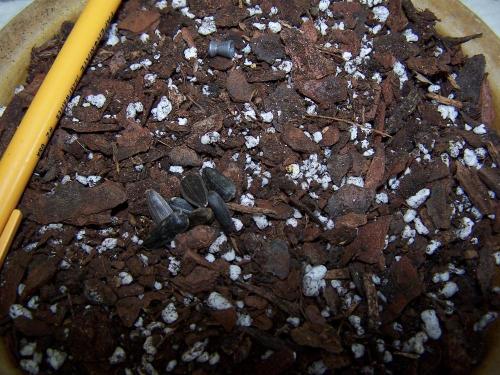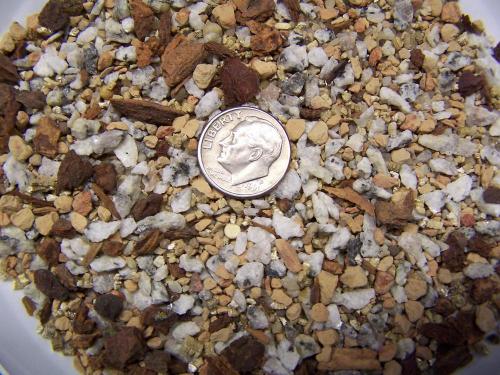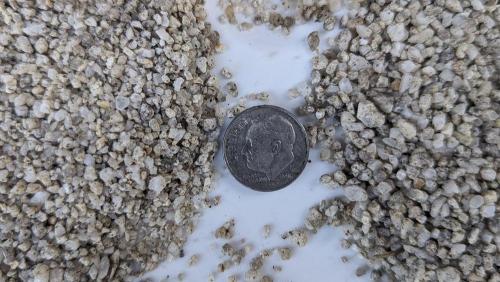@Mcgilljen Lol - Thanks for the kind words. Having answers sort of comes with 40+ years of exploring different ways of making a plant's root system happy, as that IS a prerequisite if the plant is to be healthy.
Try these operations for pine bark. Let them know you're making your own grow medium and the bark needs to be dust to less than 1/2". If you draw a blank, ask if they can make a recommendation. Last week I found a perfect bark product in Austin TX, with minimal effort, for someone who had been searching for years ..... just by nosing around the internet and making a couple of calls.
Seagle Landscaping
1774 New Era Rd
(865) 428-1888
Mountaineer Mowing & Mulching
(865) 270-0870
When I would pull them from their pots and look at the roots, they would be all brown and desiccated. Do you have any idea why this might be? Was it because I was filling in the air space between the particles? If you didn't screen out the fines over insect screen, that's likely the reason - too much water. I screen the Turface and screen the dust out of the cherrystone or crushed granite and the prescreened fir bark I use. I then keep the volume of bark at 1/3 of the mix, but +/- the ratio of grit to Turface to alter water retention. Examples:
Std mix is
3 parts screened pine or fir bark
3 parts screened Turface MVP
3 parts screened crushed granite (grower size) or 3 parts #2 cherrystone (quartzite)
For more water retention:
3 parts screened pine or fir bark
4 parts screened Turface MVP
2 parts screened crushed granite (grower size) or 3 parts #2 cherrystone (quartzite)
For less water retention:
3 parts screened pine or fir bark
2 parts screened Turface MVP
4 parts screened crushed granite (grower size) or 3 parts #2 cherrystone (quartzite)
And even more subtle alterations are equally as easy.
The key takeaway here is you can markedly increase water retention if necessary without having to depend on perched water as the reservoir. When you screen the particles so they're larger than about 1/10", all the spaces between soil particles remain water-free. Increasing the volume of particles with internal porosity (Turface), and decreasing the volume of particles that hold water only in the surface of the particle offers wide latitude. That adjustability sets the stage for very healthy root systems for a very large variety of plants.
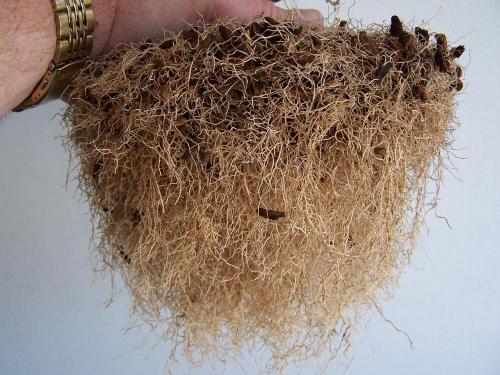 .... many folks claim Turface holds too much water
.... many folks claim Turface holds too much water The word "Turface" is on the bag of many products of varying sizes, all of which are inappropriate for use in container media except for Turface MVP and The screened Turface product Profile sells specifically for use in media (hard to find). Turface MVP, even if screened over insect screen and the fines are used elsewhere, is too water-retentive to be used as as a 1-part medium. It's purpose as it relates to the gritty mix is no more than adding water-retention w/o need to sacrifice aeration. You'll find that, in every case, anyone who complains that Turface holds too much water doesn't understand the concept that a medium's particle size primarily drives water retention, and the answer to too much water retention (associated with Turface MVP) is to use less of it, not discount it entirely as a part of your grow media.
Do you think it is OK to use your Gritty mix recipe and then add one part of potting mix? I wouldn't bother - I'd just use another mix: Reason, Turface takes more effort to make than most mixes and it cost's more on a per volume basis; so, it doesn't make sense to invest the time and $ it takes to make the mix and then undo it's most important characteristic - excellent aeration from top of the soil column to the bottom of the soil column, no matter what the ht of the soil column. In all honesty, if there was a plant that needed more water retention than I could manage by taking advantage of the medium's adjustability, I'd switch to the 5:1:1 mix. It would be pretty much the same as growing in a gritty mix amended with potting soil for less effort and less $ outlay.
Do you think people say it holds more water when compared to pumice? Yes, and they would be right. The internal pores of Turface products are open, so water and air can move freely in and out of the pores. Internal pores of pumice are closed at least to the degree that pumice from some sources can float on water for years before becoming waterlogged. This means that most of the air porosity pumice adds to media is the result of fracturing of the outer walls of pores on the particles' surface.
I've seen the marble experiments on YouTube actually. It's so interesting. Would you be kind enough to let me know what searchwords you used to find it or provide a link. I'd like to listen to whoever did the video.
Maybe some of my plants failed in pure gritty mix because I didn't fertilize. Oh goodness. Yes. Using a mix that drains that freely requires close attention to nutritional supplementation.
And because I'm a lazy waterer. That too. While the gritty mix's ability to hold water is often underestimated, watering on an as needed basis is pretty much a standard part of any care regimen.
Have you grown sempervivums in your 511 mix? Yes
Did they do well? Yes - you can see some bark if you look closely.
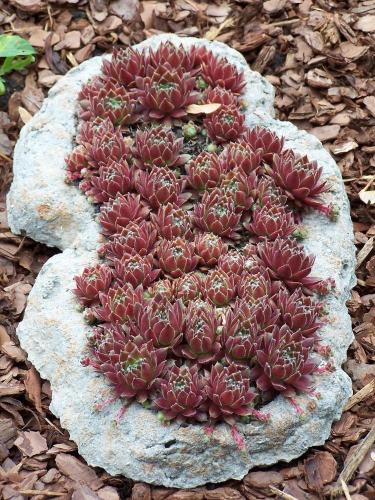
Semps will grow almost anywhere and will be at home in very spare (low nutrient load) media. In fact, they really often don't need a medium at all.
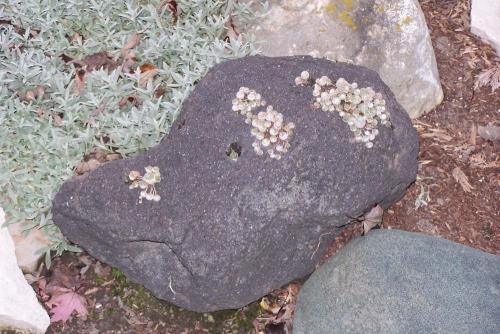

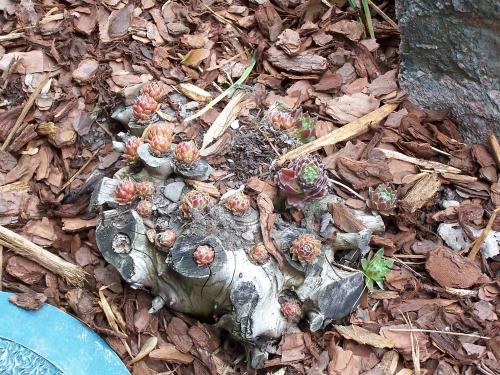 I'm glad you mentioned the fertilizer you like. I will try that.
I'm glad you mentioned the fertilizer you like. I will try that. I mention it often because it's a product that delivers at least as much as it promises. It is the best product I have ever used for containerized plants, and the reasons are many and varied.
The bark I'm able to get is full of sapwood. Is there any disadvantage to just leaving it in there? And is there any very affordable way that you can recommend to get the bark to the correct size? There are several disadvantages to having a lot of sapwood in the bark. 1) It immobilizes nitrogen because it breaks down much faster. 2) It's breakdown is associated with a pH upward spike at some point during the composting process 3) While it might not seem important, work done by soil biota produces exothermic heat, which can warm the soil up to 10* higher than it normally would be, This isn't an issue for houseplants, but can be an issue for plants grown outdoors.
I've always had ready availability and easy access to pine bark of appropriate size. Some people have used mower or a small wood chopper to break it down, but I think you can find something if you devote a little time to searching the net and making calls.
I bought a bag of Happy Frog Soil Conditioner today. It seems to have bark that's 1/4" to dust size. Would that be good for 511 mix? If you were using in in the place of the peat fraction - yes. If you're using it as the base of the mix - no ...... you might as well just use the medium as it is. Mixing the bottom 6" of grow medium in any pot with an equal measure of perlite will reduce the amount of excess water the planting can hold by half. Adding some form of ballast can additionally limit how much excess water a planting can hold.
Compare D to A below to see how an overturned pot can work passively to eliminate a significant fraction of the excess water a planting can hold. Even tipping the pot (compare B to A) after a thorough watering can make a difference you can see the moment you tip the pot (after it has stopped draining).

Al

